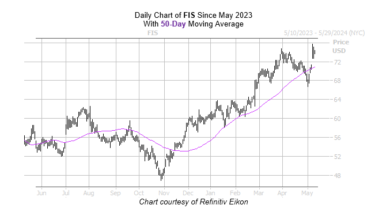Agriculture is fast becoming a growth market for fintech

As a capital-intensive business, with complex financial needs, agriculture has been central to the business of many banks. Food production is not only a global business, but universal in its role supporting the survival of humanity.
Many major banks have their roots in farming, including Crédit Agricole, Rabobank and Agricultural Bank of China. Enhancements in industrial technology — the agri-tech market — is booming. However, global climate and economic factors are creating profitability challenges for farms. Emerging digital solutions and a new generation of fintech companies are poised to solve many of these issues.
According to the World Bank, agriculture accounts for 4 per cent of global GDP and in some of the least developed countries, it can account for more than 25 per cent of GDP. The World Bank also estimates that the global food demand will increase by 70 per cent by 2050 and at least $80bn in annual investments throughout the value chains will be required in response.
Increasing profitability in farming operations is a priority for over half of all farmers surveyed, according to the State of the Farmer Report 2024 from AgriWebb, a provider of livestock management software. According to the report, 58 per cent of US, almost 53 per cent of UK, and 54 per cent of Australian farmers rated profitability as a top priority.
Economic factors are impacting global farms, according to the AgriWebb report. US farmers faced increased input expenses, a drop in crop and livestock prices, and a decline in direct farm payments from the government. In the UK, farmers now deal with high inflation, changing grant-based systems and slow growth. While in Australia, increased rains, an expected turnaround in livestock prices, and an increase in the gross value of livestock and livestock products is predicted after poor seasonal conditions in 2023.
In the UK, the Basic Payment Scheme will this year be replaced by the Environmental Land Management Schemes, which will require farmers to implement environmental practices that reduce carbon emissions and increase biodiversity. Last year, Farmers Weekly predicted that without BPS funding, as many as 42 per cent of British farms would struggle to break even, a figure the UK government does not agree with. However, the change does mean that many farms in the UK will need to look towards more innovative and technologically led solutions to remain profitable.
However, across all farms, an increase in fuel and fertiliser bills in 2023, as well as inflation and interest rate hikes, have negatively impacted loan repayments.
How fintech solves farming
When surveying farms from the US, UK and Australia, the AgriWebb report cited accounting and finance digital solutions as the second-most deployed software, coming in just behind record-keeping solutions. However, while including more than just financial data, more than 50 per cent of these farms in the report claimed they used “pen and paper” or Microsoft Excel spreadsheets for their record-keeping.
While there is a technology acceptance gap with global agriculture, the business model of farming can also make the businesses difficult to bank if using traditional financial methods without specialised insight into the sector.
“Unlike traditional businesses, [agricultural] products — animals and crops — are born or grown, making them invisible on bank statements until they are sold,” says Dave Dodds, CEO of Figured, a provider of farm financial reporting dashboards.
This complexity creates challenges when using traditional financial management and traditional banking models for risk assessment and loan approval.
[Agricultural] products — animals and crops — are born or grown, making them invisible on bank statements until they are sold
“Traditional banks often struggle to fit farmers into their standard models due to the fluctuating values of livestock and crops,” he adds. “Just as there are specialist accountants, there are also agricultural bankers who are equipped to handle this complexity.”
Roland van der Vorst, head of innovation, wholesale and rural at Rabobank, agrees with Dodds that farming is a “cyclical” and “uncertain” business, which is becoming “increasingly unpredictable” due to climate issues. Rabobank has been supporting the food and agriculture sector with banking services for over a century and has experience dealing with generations of farming families across the global ecosystem.
However, van der Vorst feels it is difficult for fintech companies entering this space to dominate the market and scale because of its fragmented nature.
“Grains and oil and seeds are totally different from livestock and totally different from fresh produce — all the sectors are different, and the countries are different,” he says.
However, fintech solutions are emerging in the farming sector. Mobile-based lending and payment platforms can ease access to credit and create efficiencies in payment processing. Digital platforms also give farmers the ability to broaden their markets and achieve better prices for their output. Meanwhile, access to real-time, accurate data helps predict weather patterns and increase crop yields.
Some well-known agri-fintech companies include: Tillable in the UK, which partners with Evergreen Bank offering diverse financial services; Oxbury Bank in the UK, the first and only bank aimed at farming in the country; US-based WorldCover, which offers satellite technology for climate insurance in emerging markets; and Twiga in Kenya, which runs a marketplace for farmers and buyers.
Pressure to scale
Farms are looking for “economies of scale to be able to grow, to be able to become more productive and more efficient and automated,” says Nick Evans, managing director and co-founder of Oxbury.
These farms are looking to explore export/import substitution, sustainable regeneration, and greener produce and farming methods, says Evans. Farms are also being impacted by consolidation, which creates larger farms that have the economies of scale to produce food that consumers can afford to pay, as well as dealing with sustainability goals and climate change, he adds.
“Big farms all around the world are getting bigger, because you need economies of scale to produce food at the price which consumers can afford to pay,” he says. “The smaller farmers are, in a way, dropping off the bottom.”
Pressure from climate risk and sustainability goals are also creating a need for specialist funding, says Evans.
“Globally, I think the incumbent banks are not focused on the sector in the way in which they have been in the past”, with specialised people dedicated to farming and offering a personalised service, he adds. Evans points to the fact that it took Oxbury only three and a half years to obtain 5 per cent market share in the UK as evidence of this trend. “We’re a proper challenger bank taking market share from the majors,” says Evans. “The farmers clearly value something that we’re doing.”
Oxbury tends to deal with the top end of the agriculture market in the UK and obtained a banking licence in the UK in 2021 after starting the process in 2019. Around 95 per cent of the shareholders in Oxbury are from the agricultural sector, including farmers, landowners, distributors, veterinarians, consultants and brokers.
According to van der Vorst, regulations around climate change and sustainability goals are putting a lot of pressure on farmers to reduce their carbon emissions and that’s “really transforming the industry at this moment”.
The benefit gap is a major issue for farms when looking to invest in greener methods and reusable energy, says van der Vorst.
For example, if an individual invests in solar panels, it immediately pays off a lower utility bill. “That’s different for farmers,” he says. “If they invest in regenerative agricultural activities, it normally takes three, four, sometimes five years to really benefit from those activities — you have this gap you have to close in order to make this investment worthwhile.”
The challenge for agriculture is to be able to translate future value into benefits for farmers today. Compared with “normal financial processes”, where a bank looks back at historic values and translates that into future benefits, such as interest rates, “[with] sustainability, it’s exactly the opposite”, adds van der Vorst.
Bridging the benefit gap
Fintech companies can help with this benefit gap issue, says van der Vorst. For example, “by connecting predictions on yields to cash flow consequences, for instance: translating the planting of trees into a carbon credit that gives them money in their pocket today”, he says.
Another example of this strategy comes from Zambian neobank Lupiya. Through a partnership with the World Bank, the bank is working on a project to provide solar irrigation pumps to farmers in Zambia that includes building a credit-scoring engine that looks at additional value chains, says Evelyn Kaingu, co-founder and chief executive officer of Lupiya.
This particular pilot has been able to support women farmers as well as young people, she adds. Because of the work deploying solar irrigation pumps to 100,000 farmers, agri-loan products have become the bank’s second-most active line in the business loans portfolio, says Ms Kaingu.
After serving the farming sector for over 125 years with traditional banking products, Rabobank is now supporting the agri-tech start-up ecosystem and developing more innovative digital offerings to their clients.
From its origins at a start-up pitch competition in 2015, Foodbytes is a Rabobank network and online platform that supports start-ups, investors and collaboration networks for the global food and agriculture industry.
Van der Vorst admits that the financial sector does have a “reputation” for finding it difficult co-operating with fintech companies at scale. However, many fintech companies that are aimed at agriculture are either marketplaces for specific commodities or financial platforms that connect farmers to lending, he adds.
Satellite insights
The bank is also investing in data solutions for farms that include sustainability data for reporting purposes, as well as geospatial data. With satellite monitoring, Rabobank can offer insights, via the geospatial data, on risk factors such as droughts and floods.
Dodds from Figured agrees with the data-led approach described by van der Vorst.
“The evolving landscape now demands the integration of production and finance data, along with environmental data, such as Scope 3 emissions,” says Dodds. “This data convergence is essential for comprehensive financial management and sustainability reporting.”
While banks that maintain a specialised focus on agriculture remain players in this sector, Dodds says the trend towards embedded finance is contributing significantly to the growth of agri-fintech by bringing the integration of financial services into non-financial platforms.
There is an “increasing need for specialised expertise and data depth within specific industries like agriculture,” he says. “Traditional banks, while proficient in general financial services, often lack the deep understanding and data granularity required to serve sectors like agriculture effectively.”
Agreeing with van der Vorst, Dodds says that traditionally banks were focused on compiling information, data, and reports that looked backward at historical trends. This is an approach in today’s agricultural environment that “is no longer sufficient”.
Because of this, Dodds says that banks are not necessarily moving out of this space, rather they are evolving their role from being data collectors to becoming strategic partners in the farming team by offering deeper insight and more tailored financial solutions and support services.
Figured collaborates with the Reserve Bank of New Zealand, to integrate fintech data for climate change stress-test modelling. “This collaboration enables us to assess individual farmer exposure, providing invaluable insights into the financial impact of environmental factors,” says Dodds.



